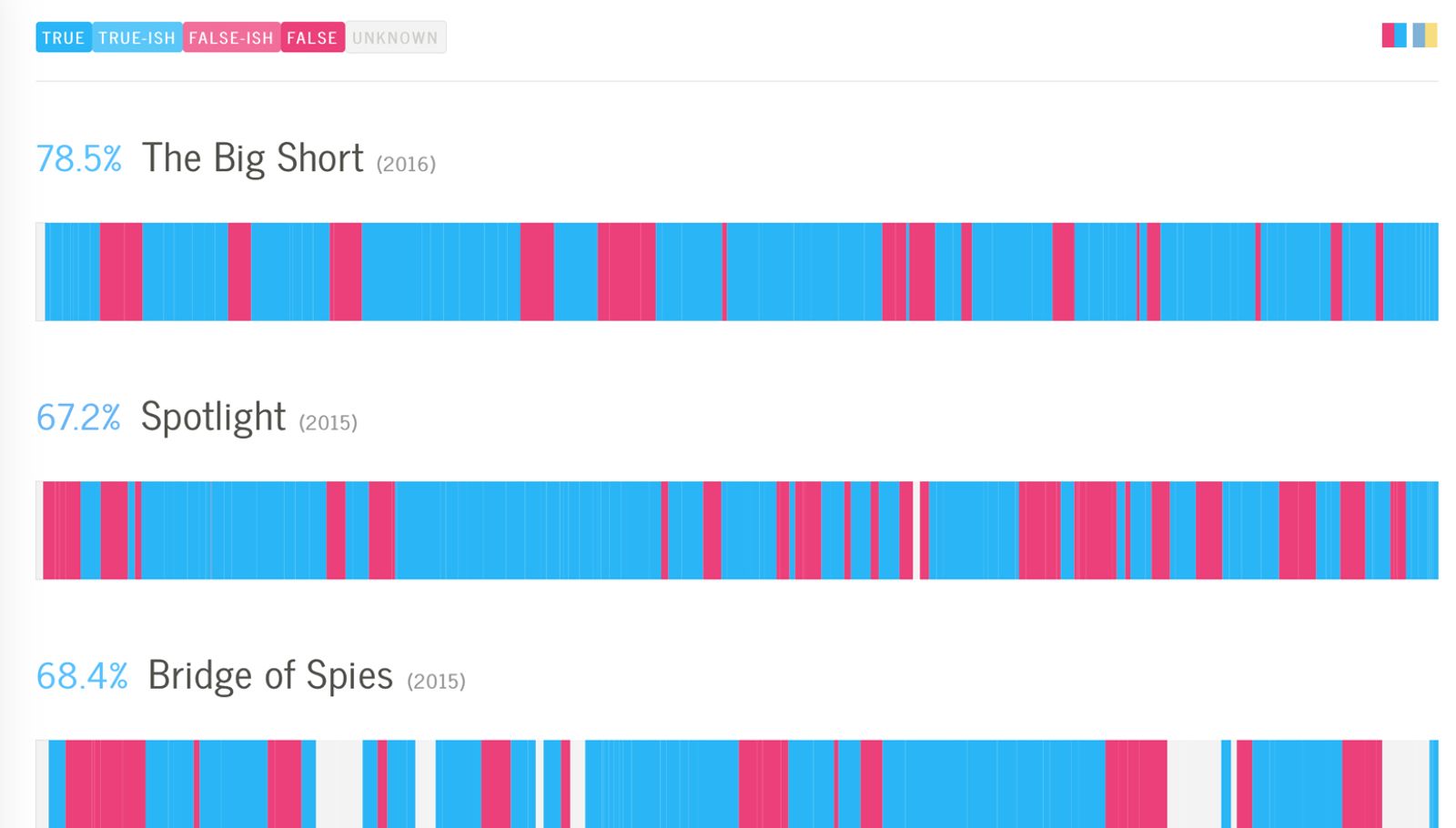The reasons for enjoying the movies we enjoy are as varied as people. Some like to be scared and thrilled, others to laugh or to cry. Some just enjoy watching crazy effects and action set pieces. There’s really no wrong way to enjoy a film. What binds it all together is the desire to both tell and hear stories. It’s the common thread that links all genres and ties all movie lovers together, disparate though we might be.
Hollywood has always relied on true stories to draw in audiences, showing feats of heroism and triumph by turning real people into characters. These movies are often some of the best ever made. Rare is the year that a Best Picture nominations lineup doesn’t include at least one movie bearing the tag “based on a true story.” But have you ever wondered just how true those true stories actually are?
A new interactive infographic published by Information is Beautiful (via Collider) breaks down the fact and the fiction to determine which of the most recent movies based on true stories contained the most truth. The infographics provided for movies such as The Big Short, Selma, American Sniper, and Spotlight -- just to name a few -- allow users to have a scene-by-scene breakdown of films in order to find out what really happened, what didn’t happen, and what artistic licenses the films took in presenting their stories. There’s even an option that lets you choose how pedantic you want to be in your assessment, which often drastically changes the percentage of fact and fiction found in each film.
Ava DuVernay’s (A Wrinkle in Time) Selma tops the list as most truthful, with a staggering 100 percent providing you allow for some artistic license -- by Information is Beautiful standards, this means that while every word uttered might not be exactly how it went, it’s close enough to the verified truth that it might as well be 100 percent accurate. Even if you apply the most rigid standards, however, Selma still tops the list at 81.4 percent true.
The scene-by-scene breakdown for the movies offers some insight into the realities of the films, often showcasing either how far the film went in creating its narrative or how meticulous it was in presenting fact. Of course, depending on how pedantic you want to be, that can be a lot or a little. For example, in the most pedantic viewing of Selma, the film loses points for showing characters dying immediately in an attack versus dying two days later in real life.
It’s an interesting way to break down the licenses filmmakers often need to take in order to bring their stories to the screen. In the case of American Sniper and The Imitation Game, the number of liberties taken are staggering, proving that you can’t always take “based on a true story” at strict face value. In the end, it doesn’t seem to take much in order to earn the true story label.
That in itself isn’t terribly surprising. These are, after all, still just movies, and the limits of the form means that license sometimes needs to be taken in order to hammer certain themes home. Perhaps we should look at these “true stories” as jumping-off points for understanding the bigger picture. Even with meticulous effort, parts of the story are bound to get condensed or left out or, in some cases, get made of whole cloth. That doesn’t make them any worse as movies, but that does mean that often there’s plenty more story to be told when the lights go up.
Source: Information is Beautiful


